Meatloaf is one of those dishes most Americans grew up eating at some point or another whether at home, school lunches, or the occasional restaurant. Like any dish that’s so widespread, meatloaf comes in a variety of shapes, textures, flavors, and even cooking methods. It’s easily a comfort food in my book. Not all meatloaves are created equal, however.
Some are soft and full of fillers. Others are firm and lean. Some have veggies while others don’t. Some use ketchup as a topping or marinara sauce or nothing at all. Some are made in loaf pans (sounds obvious) and others (like this one) aren’t. I’ve even had smoked or grilled meatloaf.
Growing up, our household meatloaf was a lean, mean, overcooked cuisine with cubes of previously frozen carrot. It wasn’t bad, but it wasn’t exactly the best representation of meatloaf. After trying all kinds of meatloaf throughout the years, what stayed with me from my childhood was that I liked a middle of the road texture (i.e. not too firm and not too soft).
I experimented with “fancier” approaches that used marinara sauce on top instead of ketchup and determined that I far prefer ketchup. I tried heavy seasoning versus minimal seasoning and realized that I enjoyed a meatloaf that derived its flavor from a few key ingredients rather than a grocery list of spices. Lastly, and possibly the most important discovery I made was that meatloaf came out so much better when not using a loaf pan! Loaf pans tend to steam the meat and you get robbed of that amazing caramelized crust more often than not.
With all of that said, this recipe makes a balanced meatloaf with a little filler for texture and moisture retention while still maintaining a tender firmness. I’ve even used a technique I learned while creating my Homemade Gyro Meat Recipe that utilizes salt as a means to maximize moisture retention, so no more dry meatloaf!
I don’t use a loaf pan either because I love a meatloaf with a nice crust all around the outside. The ketchup and brown sugar is sure to caramelize better as well. One of the most defining parts of the recipe though is the caramelization of the onions, which provides a natural sweetness to the meatloaf that complements the savory flavors while also adding to the tenderness. It takes a little longer to do this, but it’s so worth it.
I think you’ll enjoy this take on a classic comfort food dish that is now on regular rotation at my house!
Sweet and Savory Meatloaf with Caramelized Onions
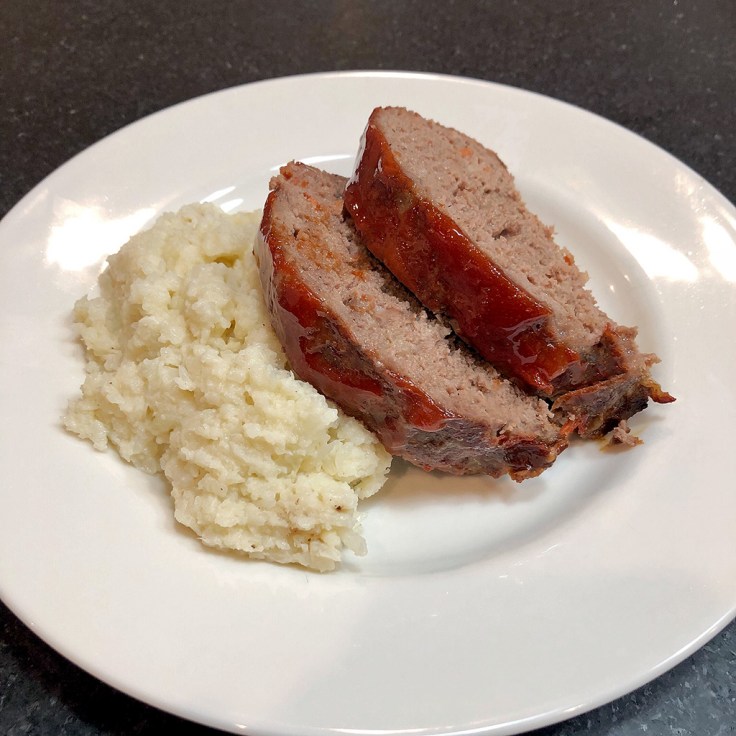
The caramelized onions in this meatloaf take it to a new level of natural sweetness that works fantastically with the texture and hearty flavors of meat.
Nutrition
~499 calories per servingIngredients
- 2 pounds 85/15 ground beef (Of course, many classic meatloaf recipes call for equal parts beef, pork, and veal, so try that if you prefer. I just like all beef and it is easier to source.)
- 1/3 cup seasoned breadcrumbs
- 1 beaten egg
- 1/4 cup whole milk
- 1/2 tbs Worcestershire sauce
- 1/2 tbs kosher salt (Try a 1/2 tbs, but if you like it saltier go for 3/4 tbs.)
- 1/4 tsp crushed black pepper
- 2 tbsp vegetable oil
- 1 large finely diced onion (Roughly 1/2 cup packed onion.)
- 1/4 cup diced carrots (Baby carrots or carrot sticks in a food processor work great. Skip the carrots if you want to cut down on the sweetness of the meatloaf a bit. )
- 1/2 cup Ketchup
- 1 tbs Brown sugar (The brown sugar isn’t completely necessary, but it does help the ketchup caramelize a bit faster. )
Equipment
- Saute pan
- Baking sheet
- Aluminum foil
- Large mixing bowl with cover or plastic wrap
- Small bowl
- Tablespoon, teaspoon, and cup measurements
- Oven-safe or instant read meat thermometer
Directions
- Before getting to the meat, dice a large onion. Small pieces will caramelize faster and incorporate into the meat more thoroughly.
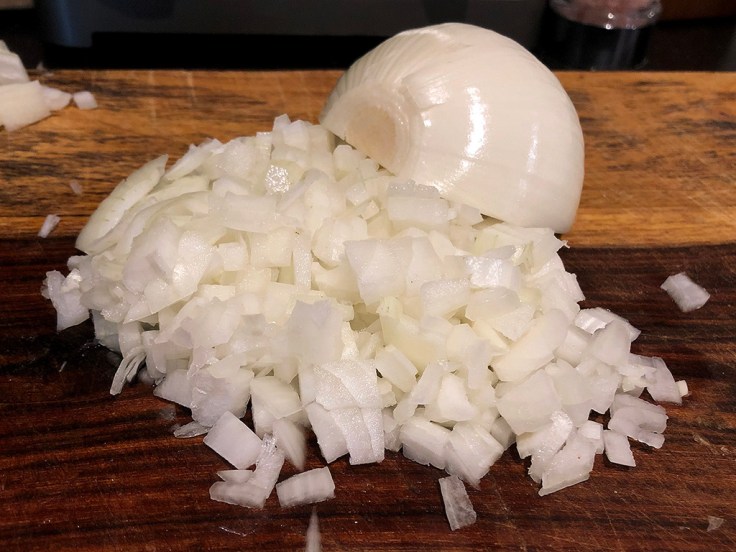
- Dice or use a food processor to finely chop some carrots. The diced carrots should amount to a loosely packed quarter cup.

- Place two tablespoons of vegetable oil in a saute pan and heat it to medium heat.
- Add the onions to the pan and mix them with the oil until well coated. Then saute on medium low, stirring every 3 to 5 minutes for 20 minutes. The onions should be a nice golden brown, but not too dark.
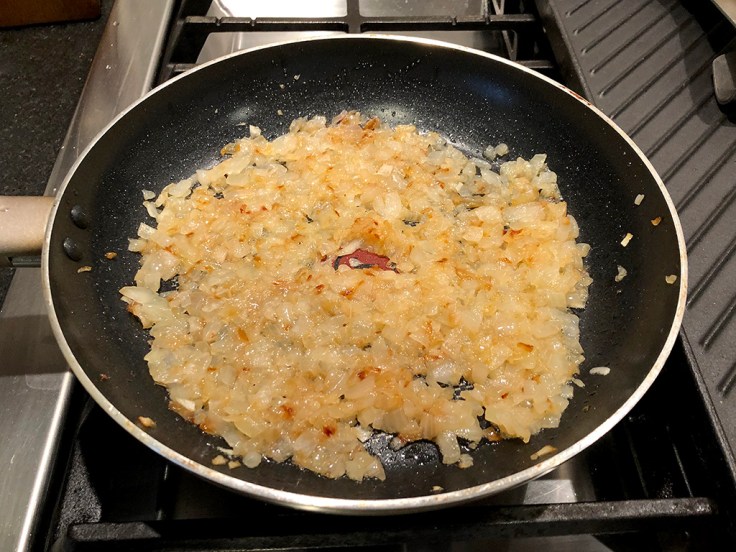
- After 20 minutes add in the carrots and continue sauteing for 10 more minutes with the onions.

- When done, place the onions and carrots in a heat proof container, let them cool, cover them, and place them in the fridge to use later when the meat is ready. You want them to be room temp or colder before using them later.

- In a large bowl place the beef, 1/3 cup seasoned breadcrumbs, 1/4 cup of whole milk, 1/2 tbs of Worcestershire sauce, 1/2 tbs of kosher salt, 1/4 tsp black pepper, and a beaten egg. Add the cool onions and carrots to the bowl as well.

- Mix all of the ingredients by hand (food safe gloves are great here) by churning them with your fingers. Don’t over-mix everything. Just get everything incorporated. Then form the mixture into a ball.
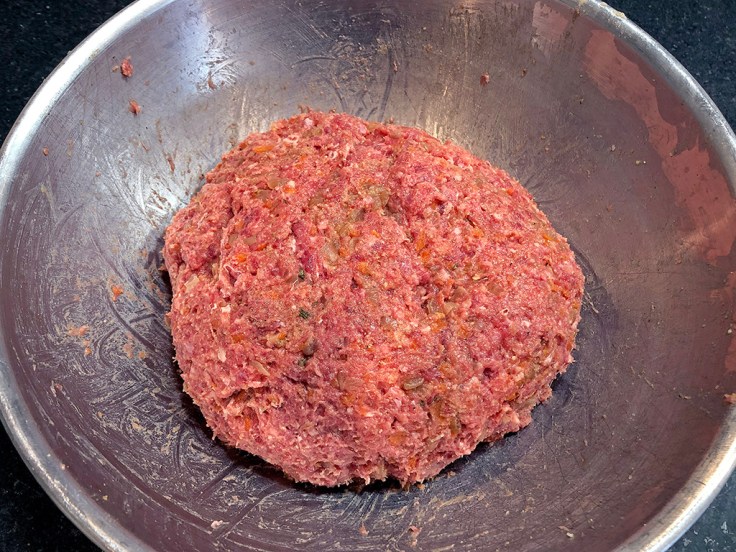
- Cover the bowl and place in the fridge for at least an hour, but no more than 8. The salt will start to work on the proteins in the meat to keep it from losing moisture as it cooks. This is one key to keeping a meatloaf from drying out. Science!
- While the meatloaf cools in the fridge, mix 1/2 cup of ketchup with 1 tablespoon of brown sugar in a bowl. Mix well until the sugar is mostly dissolved. You don’t need to heat it up. Just mix well. Cover it and place in the fridge until you’re ready to cook the meatloaf.

- When you’re ready to cook the meatloaf, pre-heat the oven to 325 degrees F.
- Line a baking sheet with aluminum foil and take the meatloaf mixture out of the fridge.
- Place the meatloaf mix on the baking sheet and form it into an elongated loaf roughly 4 inches wide and as long as you can make it. The idea is to get a meatloaf with enough height that the slices are a nice size while also making it long enough so that you can get 8 to ten good slices out of it.
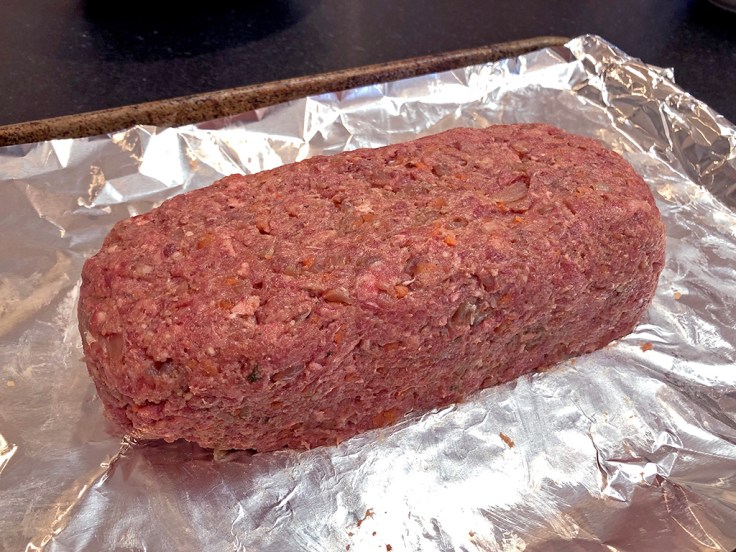
- Coat the entire meatloaf in the ketchup and brown sugar mixture. You might not use all of the ketchup, but you’ll use most. Try not to get too much on the aluminum foil and keep as much as you can on the meatloaf so that it doesn’t burn.
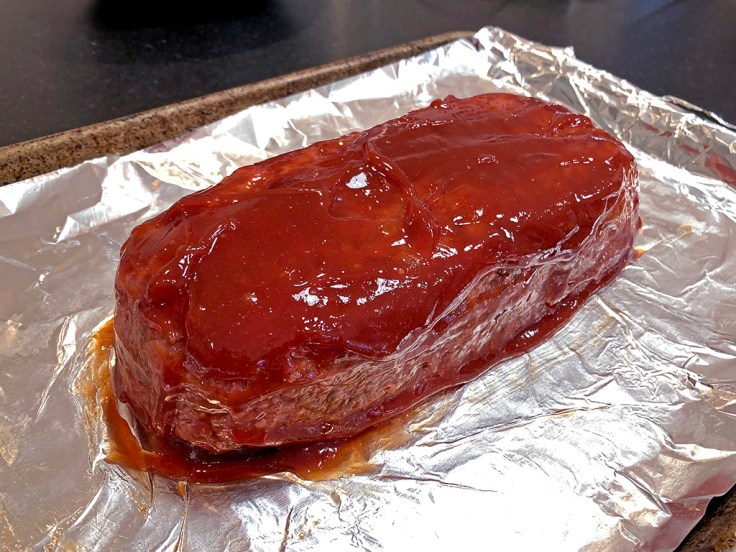
- If you have an oven-safe meat thermometer (highly recommended) then insert it now into the center of the short side of the meatloaf so that the point is located deep inside. If you don’t have an oven-safe thermometer and have an instant-read thermometer, be prepared to take a reading from the top center of the meatloaf going in about half way through.
- Place the meatloaf in the oven and roast for an hour to an hour and 15 minutes. Ideally, the internal temp should read 155-160 degrees. As soon as you hit that temperature, take the meatloaf out and let it rest. Do not remove the meat thermometer if you were using an oven-safe one. Leave it in while the meatloaf rests or you’ll lose a ton of liquid. If you are using an instant-read thermometer, then check the temp from the top of the meatloaf to try and keep as much liquid in the meat as possible. Alternatively, don’t check the temp and let the meatloaf ride for an hour and fifteen minutes.
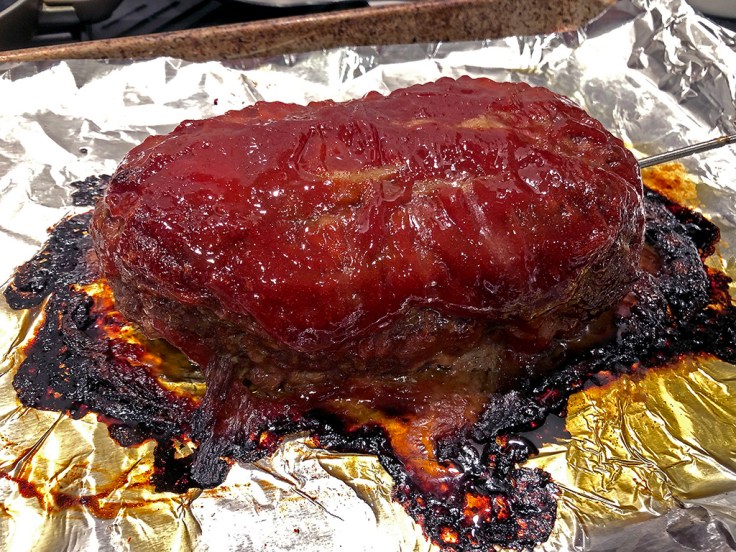
- When the meatloaf has rested for at least 15 minutes, slice and serve!


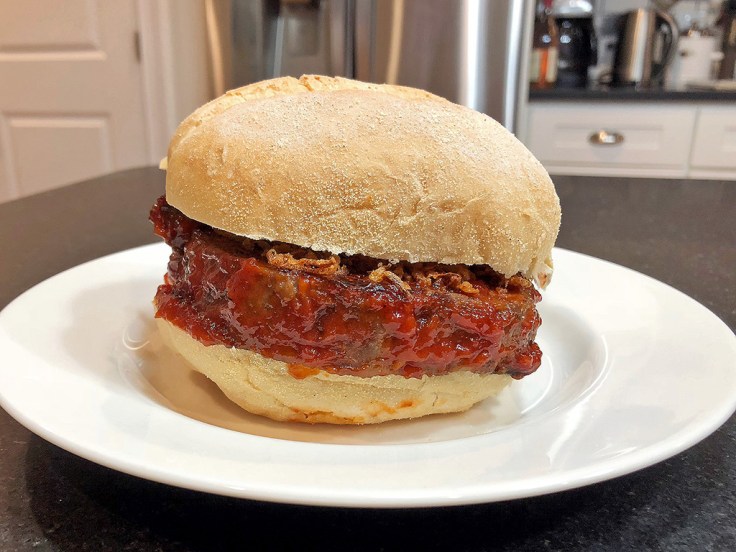
_______________________________
No spam. Just real updates on recipes, restaurant reviews, travel, and free giveaways!
_______________________________
Great recipe loved by all, so simple to make and tasty.